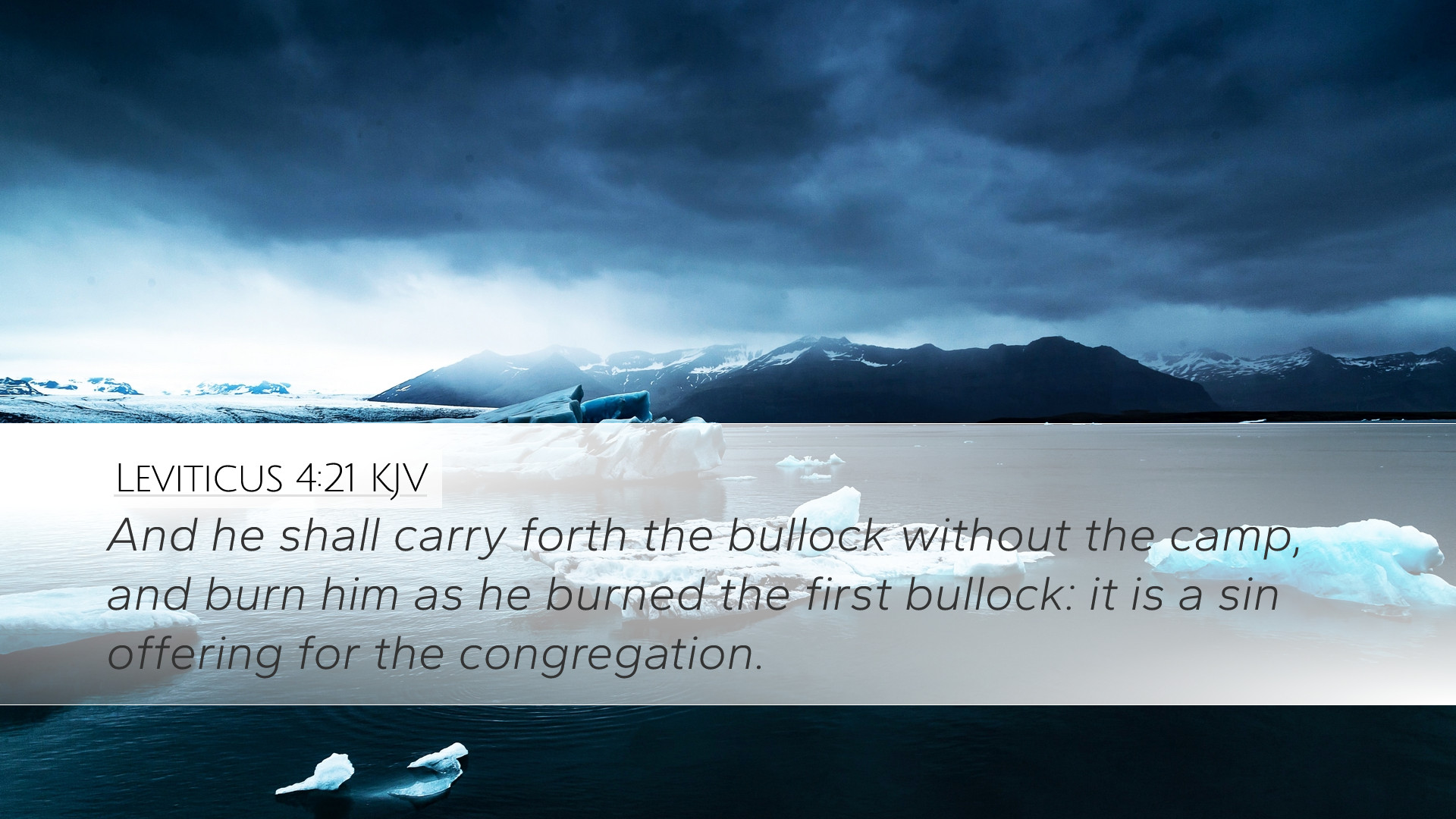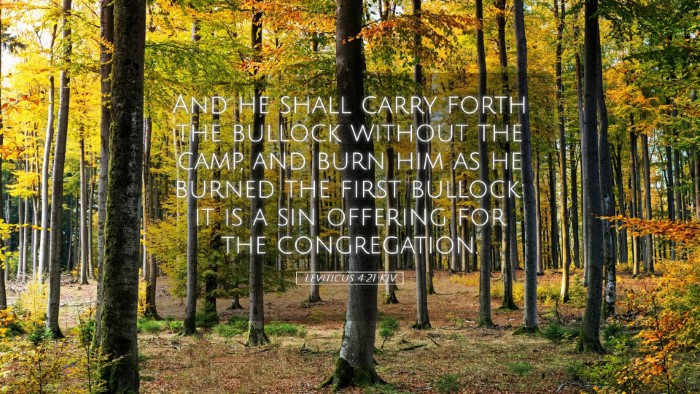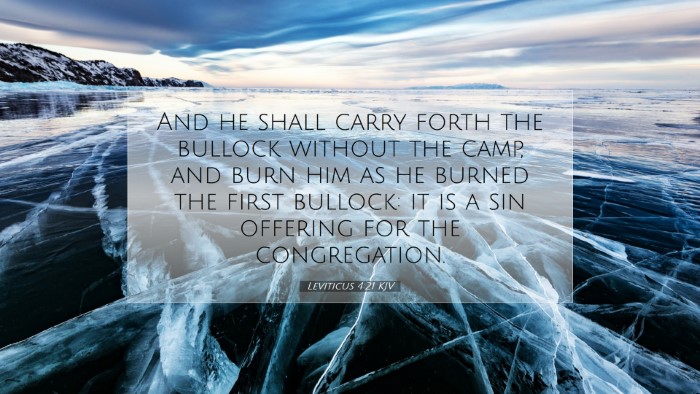Commentary on Leviticus 4:21
This verse falls within the instructions regarding the sin offerings in Leviticus and serves to remind us of the severity of sin and the graciousness of God in providing a means of atonement. The commentary below extracts from the insights of public domain experts such as Matthew Henry, Albert Barnes, and Adam Clarke.
Contextual Overview
Leviticus 4 outlines various scenarios in which individuals or the community would need to make a sin offering. The chapter reveals God's commitment to holiness and the necessity of atonement for transgressions. Leviticus 4:21 states:
"And he shall carry forth the goat without the camp, and shall burn him as he burned the first goat: it is a sin offering for the congregation."
Significance of the Sin Offering
The sin offering, particularly in the context of communal transgression, emphasizes the collective nature of sin and atonement. Matthew Henry provides a profound insight into this when he emphasizes the holiness of God and the seriousness with which He regards sin:
“Sin is a more dreadful thing than we think, and the punishment of it, being eternal, cannot be too terribly represented.”
Albert Barnes’ Insights
Albert Barnes elaborates on the concept of carrying out the goat without the camp, representing the removal of the sin from the people. This act signifies the physical manifestation of removing sin from the community:
- Symbolism of the Goat: The goat served as a scapegoat, illustrating how sins are transferred from the people to the sacrifice, and removed entirely outside the camp.
- Community Responsibility: The congregation collectively bore the weight of their sins, evidencing shared accountability for sin and the need for corporate repentance.
Adam Clarke’s Analysis
Adam Clarke focuses on the sacrificial aspect, noting the life that is required for sin and the cost associated with atonement:
“The shedding of blood is necessary; without it, there can be no forgiveness of sins.”
Clarke points out that the burning signifies complete destruction of sin’s representation, reinforcing that God does not merely overlook the sin but pays the utmost price for its atonement:
- Complete Atonement: Burning the goat symbolizes full acceptance of the sacrifice as a means of divine appeasement.
- Foreshadowing Christ: The act prefigures the ultimate sacrifice of Christ, who, outside the camp, bore our sins and brought forth a new covenant.
Theological Reflections
As we reflect on Leviticus 4:21, several theological themes emerge:
- Holiness of God: God establishes His holiness and the seriousness of sin. The act of removing the offering outside the camp indicates that sin cannot exist within the holy community.
- Atonement: The grace found in God's provision for atonement shows His character. He longs to reconcile sinners rather than condemn them.
- Corporate Sin: This passage reminds us of the communal aspect of sin; it is not just individual but also collective, influencing the community at large.
Practical Applications
For those engaged in preaching, teaching, or personal study, the insights from Leviticus 4:21 can guide practical applications:
- Reflection on Personal Sin: Encourage introspection regarding personal sins and the need for genuine repentance.
- Corporate Accountability: Facilitate discussions within church communities about shared responsibilities concerning morality and spiritual health.
- Understanding Christ's Sacrifice: Use this verse as a launching point to teach about the significance of Christ's crucifixion as the ultimate sacrifice for all humanity’s sins.
Conclusion
Leviticus 4:21 serves as a powerful reminder of God's holiness, the weight of sin, and the gracious atonement provided through sacrifices. As theologians, pastors, and scholars, examining these layers through the eyes of historic commentaries enriches our understanding of Scripture and deepens our appreciation for God's redemptive work both in the Old and New Testaments.


